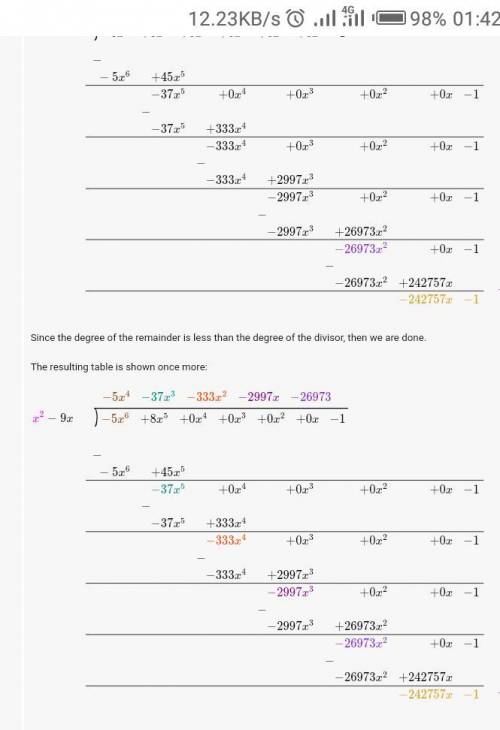
Mathematics, 07.06.2021 17:40 lxlie2315
Determine f’s end behavior
f(x)= -5x^6+8x^5-1/ x^2 -9


Answers: 3


Another question on Mathematics

Mathematics, 21.06.2019 13:20
Part a what is the area of triangle i? show your calculation. part b triangles i and ii are congruent (of the same size and shape). what is the total area of triangles i and ii? show your calculation. part c what is the area of rectangle i? show your calculation. part d what is the area of rectangle ii? show your calculation. part e rectangles i and iii have the same size and shape. what is the total area of rectangles i and iii? show your calculation. part f what is the total area of all the rectangles? show your calculation. part g what areas do you need to know to find the surface area of the prism? part h what is the surface area of the prism? show your calculation. part i read this statement: “if you multiply the area of one rectangle in the figure by 3, you’ll get the total area of the rectangles.” is this statement true or false? why? part j read this statement: “if you multiply the area of one triangle in the figure by 2, you’ll get the total area of the triangles.” is this statement true or false? why?
Answers: 2

Mathematics, 21.06.2019 16:20
Which mathematical statements are true? 1) if 3 is an odd number, then 3 times 3 is an even number. 2) if 6 is less than 7, then 4 is greater than 7. 3) six is divisible by 3, and 10 is a multiple of 2. 4) the average of the data is greater than the largest value in the data, or it’s less than the largest value in the data. 5) the slope of a linear graph is its rate of change, and the graph’s y-intercept is the initial value. 6) if an equilateral triangle has equal angles, then all its angles will measure 45°.
Answers: 3

Mathematics, 21.06.2019 17:00
In tossing one coin 10 times, what are your chances for tossing a head? a tail? 2. in tossing one coin 100 times, what are your chances for tossing a head? a tail? 3. in tossing one coin 200 times, what are your chances for tossing a head? a tail? deviation = ((absolute value of the difference between expected heads and observed heads) + (absolute value of the difference between expected tails and observed tails)) divided by total number of tosses. this value should always be positive. 4. what is the deviation for 10 tosses? 5. what is the deviation for the 100 tosses? 6. what is the deviation for 200 tosses? 7. how does increasing the total number of coin tosses from 10 to 100 affect the deviation? 8. how does increasing the total number of tosses from 100 to 200 affect the deviation? 9. what two important probability principles were established in this exercise? 10. the percent of occurrence is the obtained results divided by the total tosses and multiplied by 100%. toss the coins 100 times and record your results. calculate the percent occurrence for each combination. percent head-head occurrence: percent tail-tail occurrence: percent head-tail occurrence:
Answers: 3

Mathematics, 21.06.2019 17:00
Tom had a total of $220 and he spent $35 on a basketball ticket . what percent of his money did he have left?
Answers: 1
You know the right answer?
Determine f’s end behavior
f(x)= -5x^6+8x^5-1/ x^2 -9
...
f(x)= -5x^6+8x^5-1/ x^2 -9
...
Questions

Mathematics, 03.11.2020 05:10


Physics, 03.11.2020 05:10

History, 03.11.2020 05:10

Mathematics, 03.11.2020 05:10


Mathematics, 03.11.2020 05:10




Mathematics, 03.11.2020 05:10

Mathematics, 03.11.2020 05:10

Mathematics, 03.11.2020 05:10


Mathematics, 03.11.2020 05:10



Mathematics, 03.11.2020 05:10

English, 03.11.2020 05:10

Medicine, 03.11.2020 05:10




